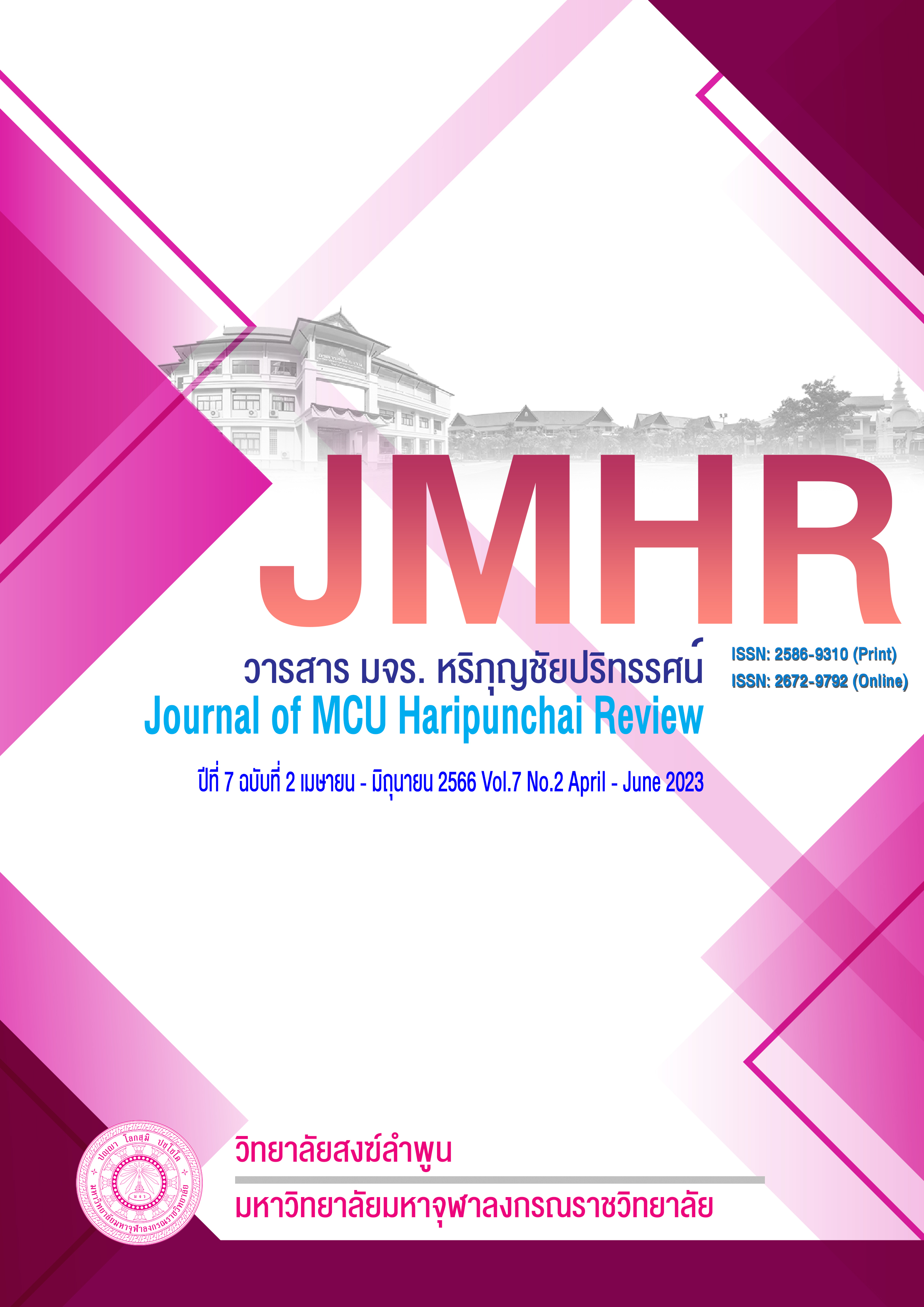Happy Workplace Management Model
Main Article Content
Abstract
During the work period, no one would deny that The organization is like a second home. which has devoted more than half of their time and life to the organization And of course everyone would want something in return from the organization. That is a happy organizational management model (Happy Workplace), both happiness in work and happiness in life. But how to make the organization a happy organization (Happy Workplace). according to the Buddhist definition of happiness which consists of Kayiksuk, physical health, and Chetasiksuk, mental health. Emphasis is placed on the formulation of a happy organization management policy (Happy Workplace), starting from the executives, which is an important starting point for setting policies and images. Management model for the organization of happiness by setting a vision missions and goals of the organization through the mechanism of managing the organization of happiness It starts from the process of integrating participation within the organization from all sectors on the basis of happiness from work in developing a model for managing a happy organization (Happy Workplace). Predict the physical of the organization. focus Leadership and Confidence Participatory mobilization and finding a happy balance between people and organizations Set a model for managing a happy organization for implementation and evaluation. To raise and increase operational efficiency for personnel who will create productivity for the organization according to the goals set on the basis of happiness that everyone desires from the organization. To create a balance of happiness for the organization and personnel from returns in the form of products and results arising from the management process. In this article, we present a model for managing a happy organization (Happy Workplace) from the process of creating a happy organization based on participation between personnel from all sectors and organizations.
Article Details

This work is licensed under a Creative Commons Attribution-NonCommercial-NoDerivatives 4.0 International License.
References
เกศี จันทราประภาวัฒน. “การสร้างและพัฒนาบรรยากาศการทำงานในองค์กรสมัยใหม่”. วารสาร มจร. หริภุญชัยปริทรรศน์. 6 (1) : 61-74.
ก้านทอง บุหร่า. “องค์กรแห่งความสุข: แนวคิด กระบวนการ และบทบาทของนักบริหารทรัพยากรมนุษย์”. วารสารวิทยบริการ มหาวิทยาลัยสงขลานครินทร์. 28 (3) : 169-176.
พระพรหมคุณาภรณ์ (ป.อ. ปยุตโต). (2558). พจนานุกรมพุทธศาสน์. กรุงเทพมหานคร : สำนักพิมพ์ผลิธัมม์.
นภาพร หงส์ทอง. “วิเคราะห์ความต้องการของมาสโลว์ในมุมมองของพระพุทธศาสนา”. วารสารปณิธาน. 17 (2), 121-151.
แผนงานสุขภาวะองค์กรภาคเอกชน. (2552). คู่มือมาสร้างองค์กรแห่งความสุขกันเถอะ. กรุงเทพมหานคร : สำนักงานกองทุนสนับสนุนการสร้างเสริมสุขภาพ.
สำนักสนับสนุนสุขภาวะองค์กร. (14 กันยายน 2566). Happy Workplace. [ออนไลน์]. แหล่งที่มา : https://happy8workplace.thaihealth.or.th/about/what-is-it.
HR NOTE.asia. (14 กันยายน 2566). 20 เคล็ดลับกับการสร้างสมดุลให้ชีวิตและการทำงาน (Work Life Balance). [ออนไลน์]. แหล่งที่มา : https://th.hrnote.asia/personnel-management/190725- work-life-balance.


